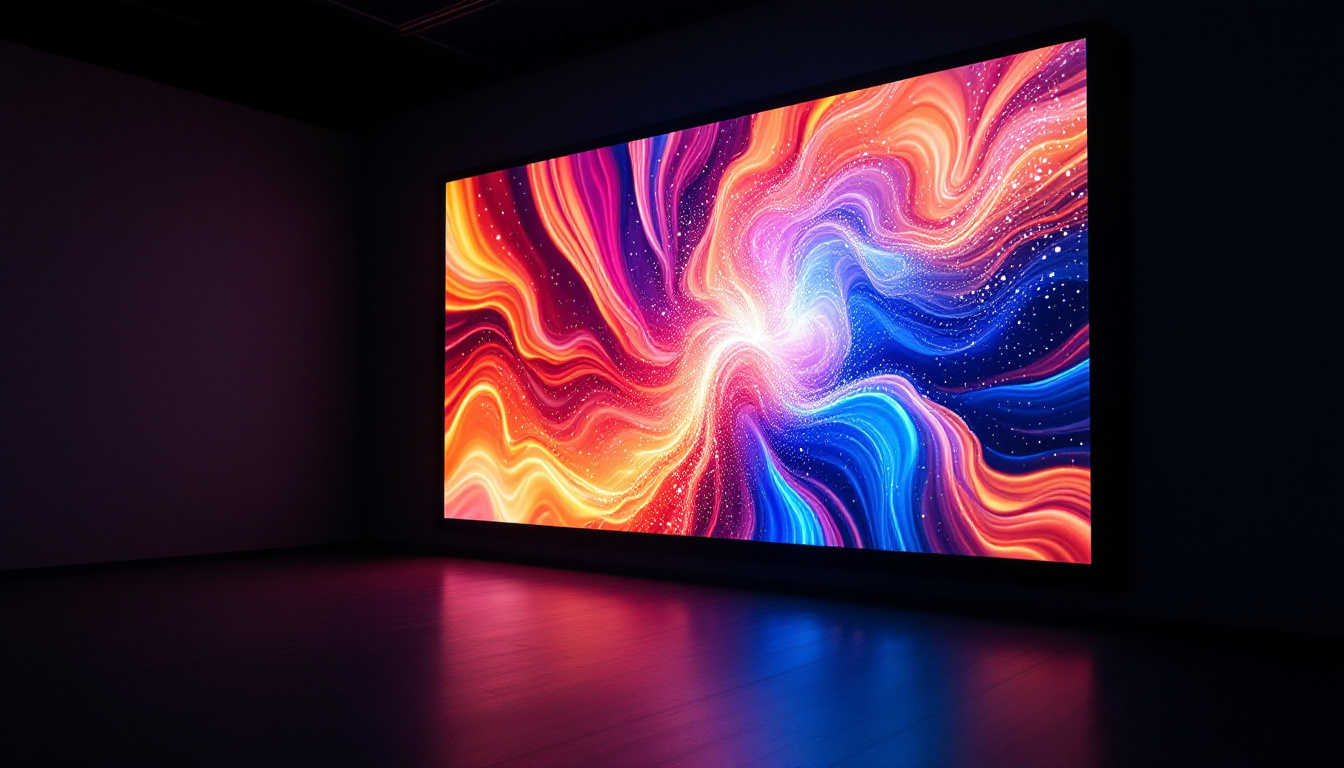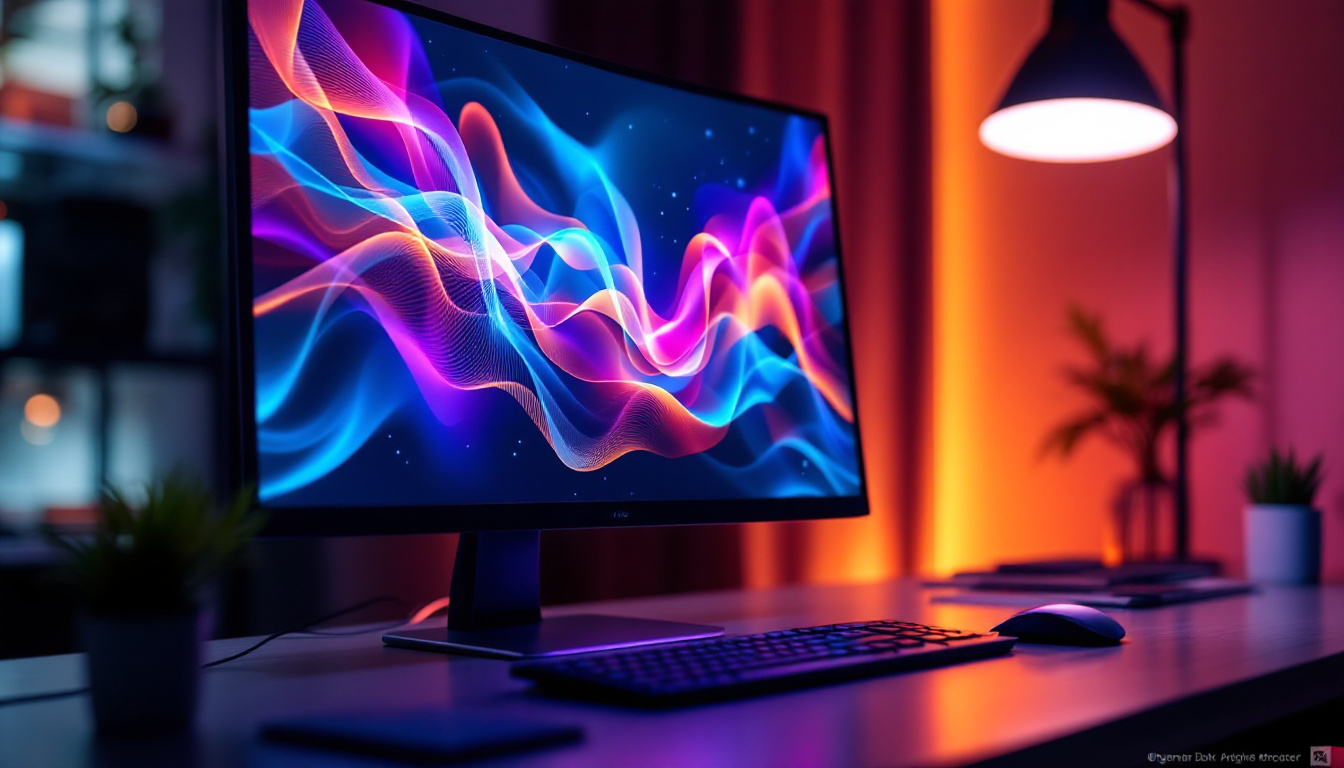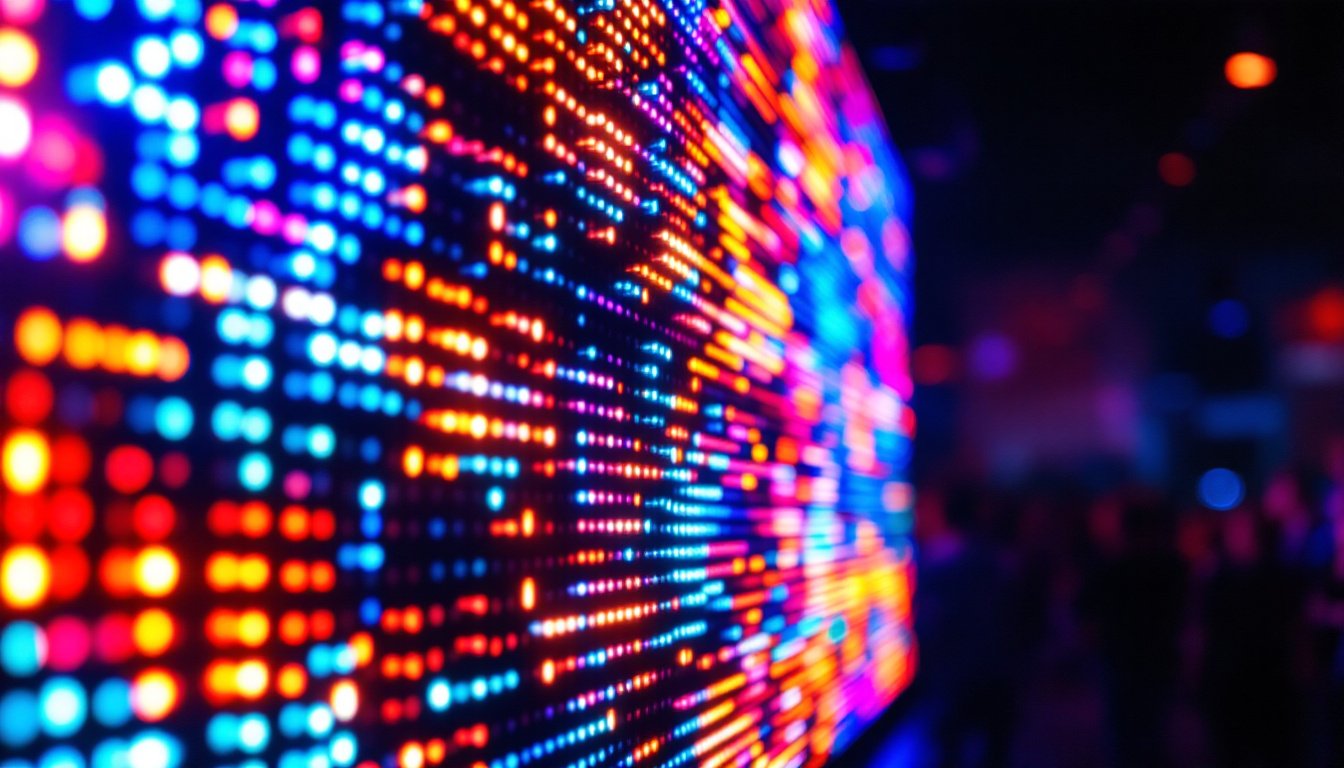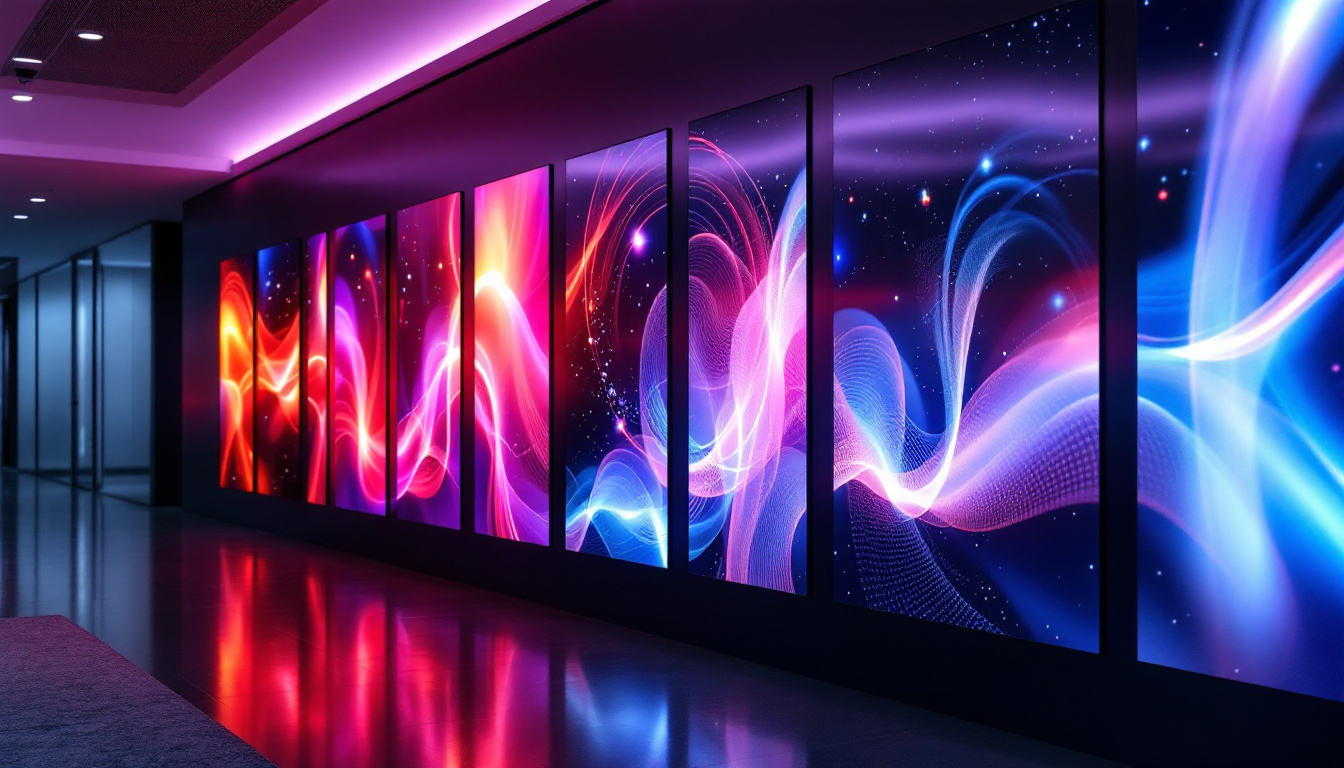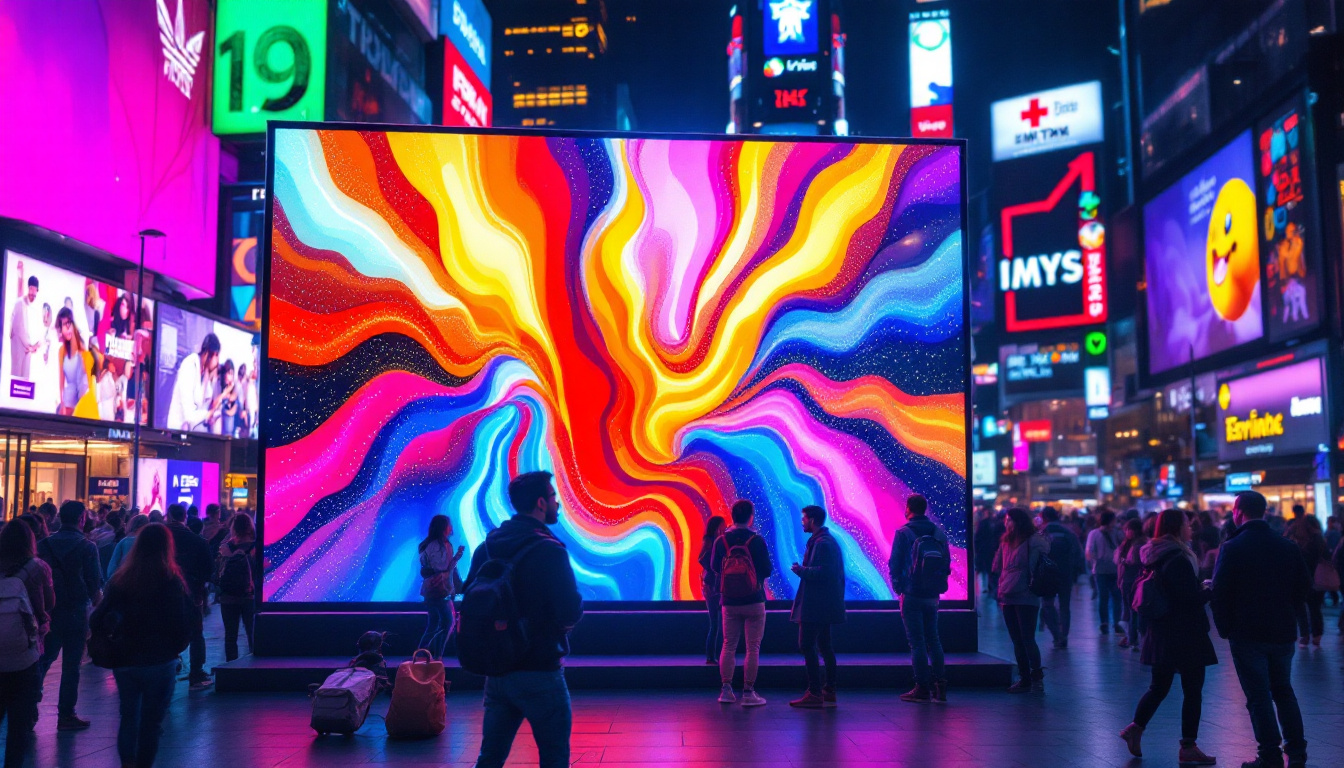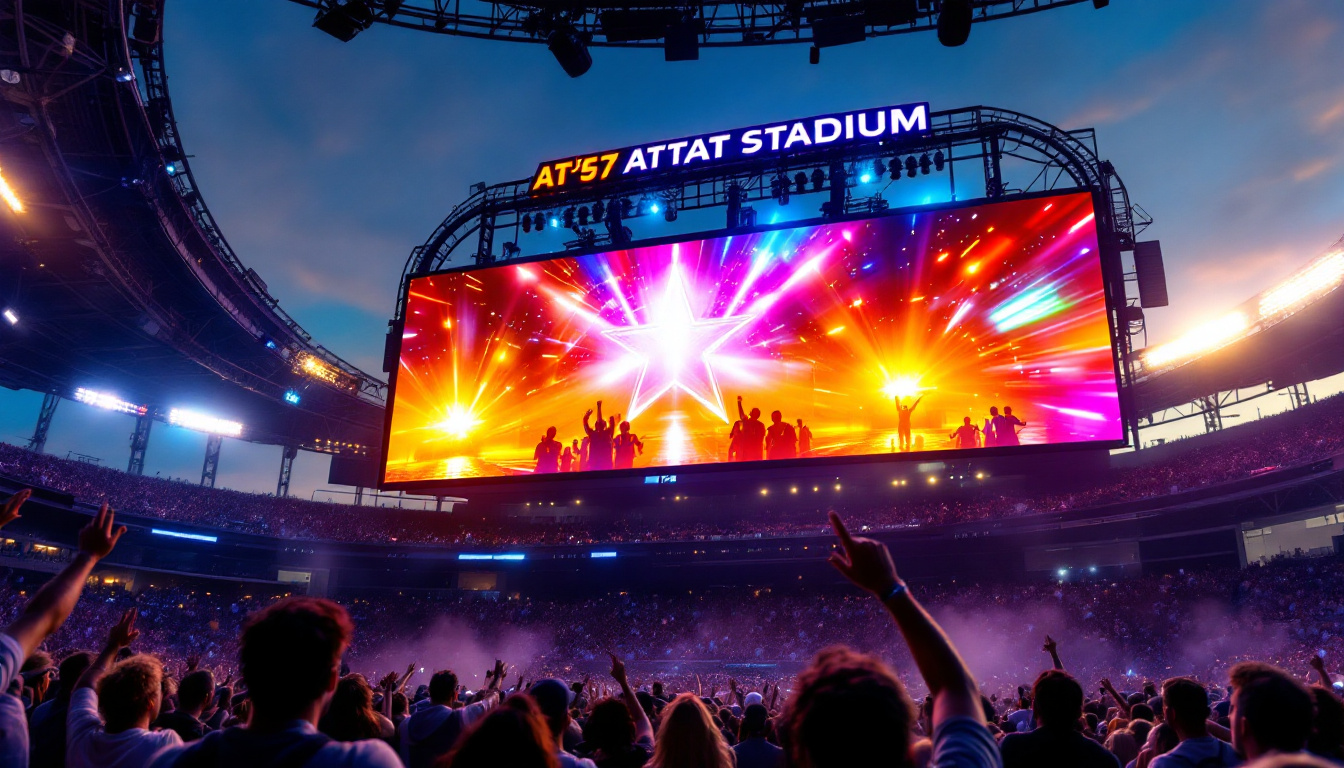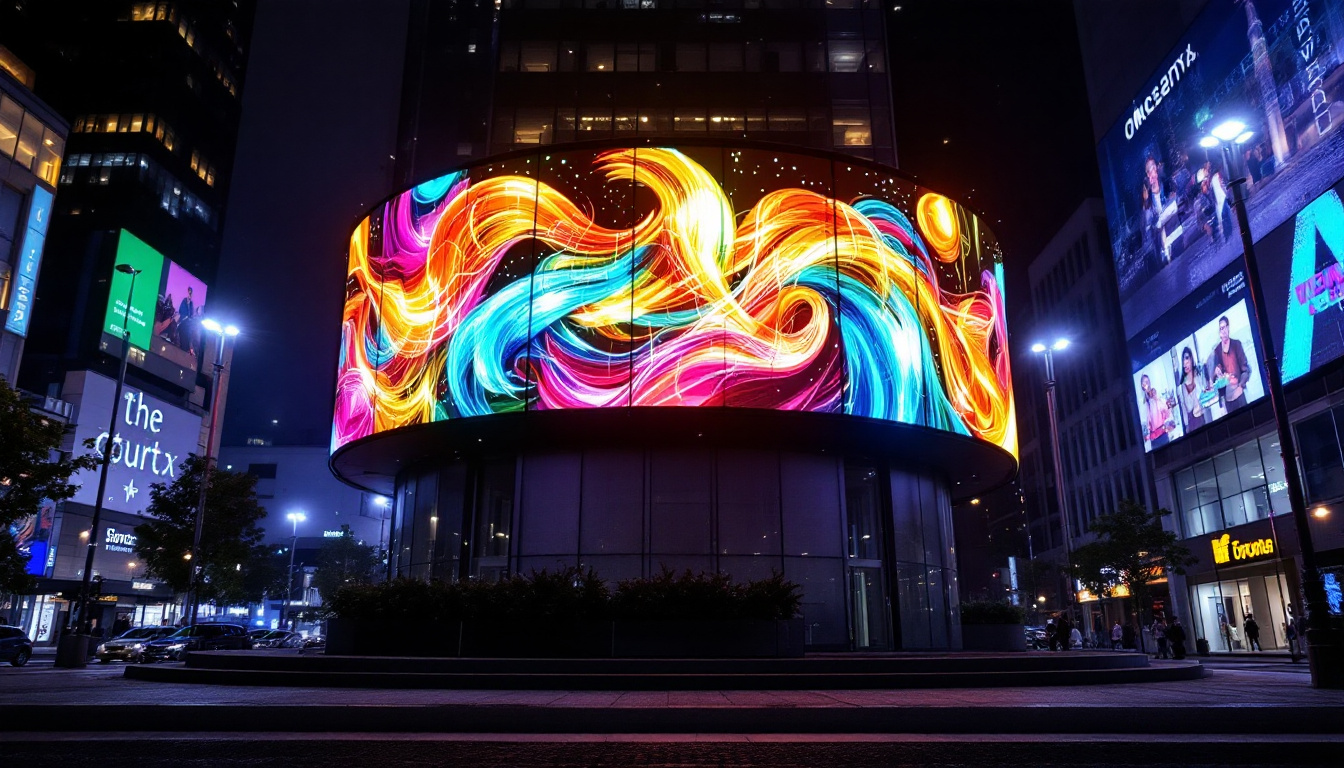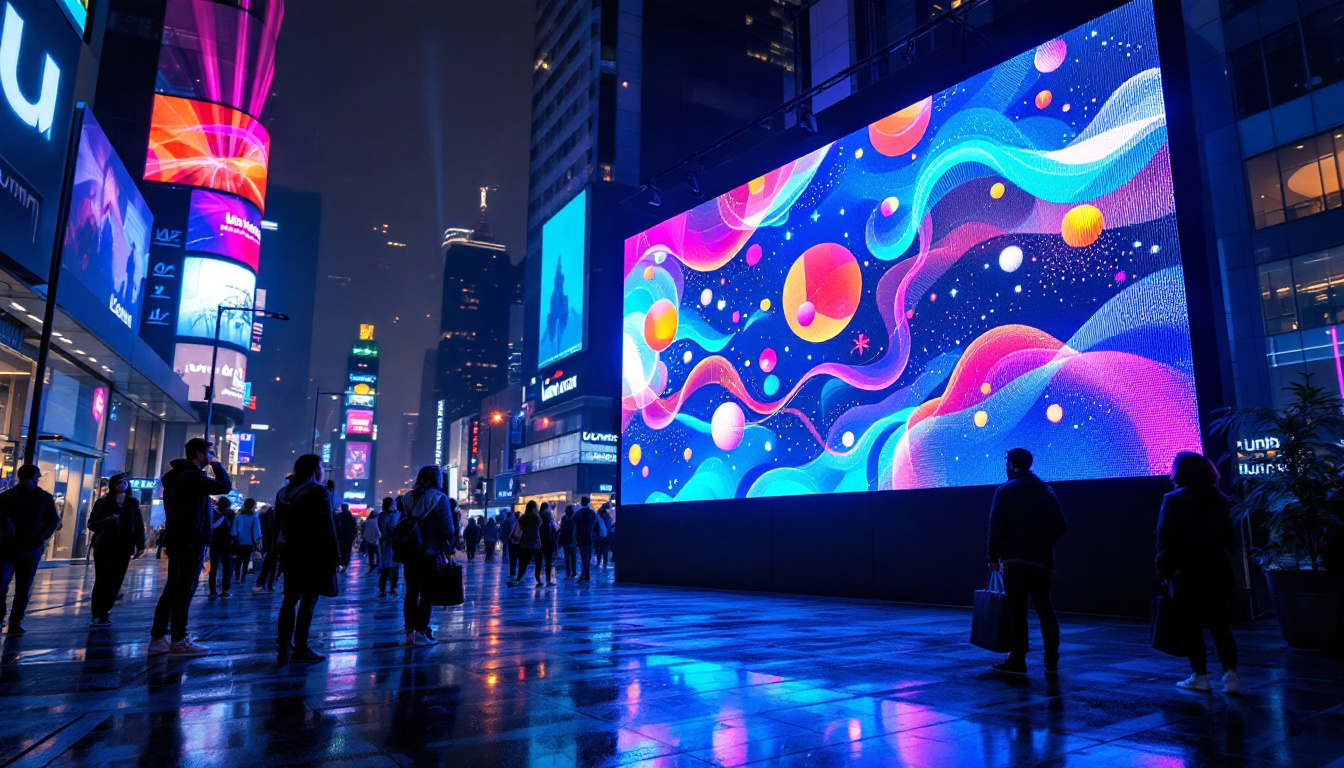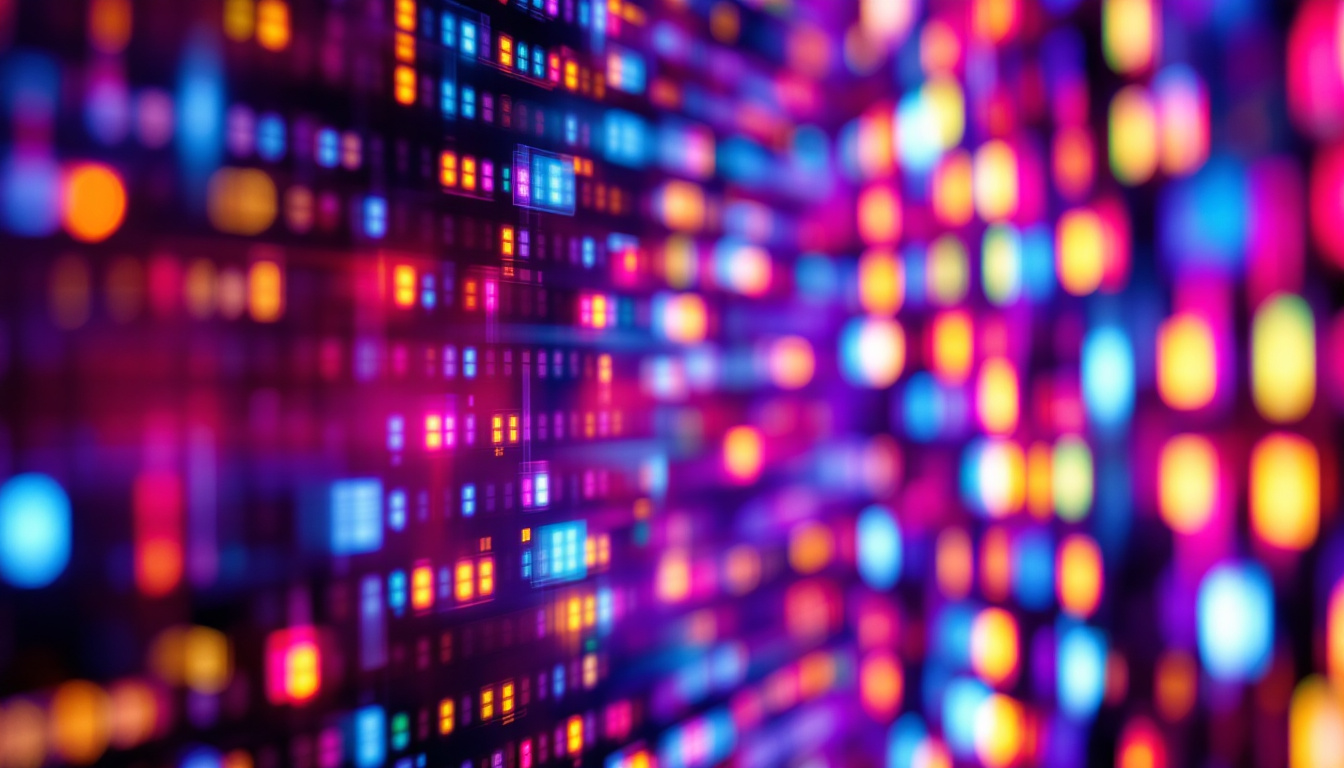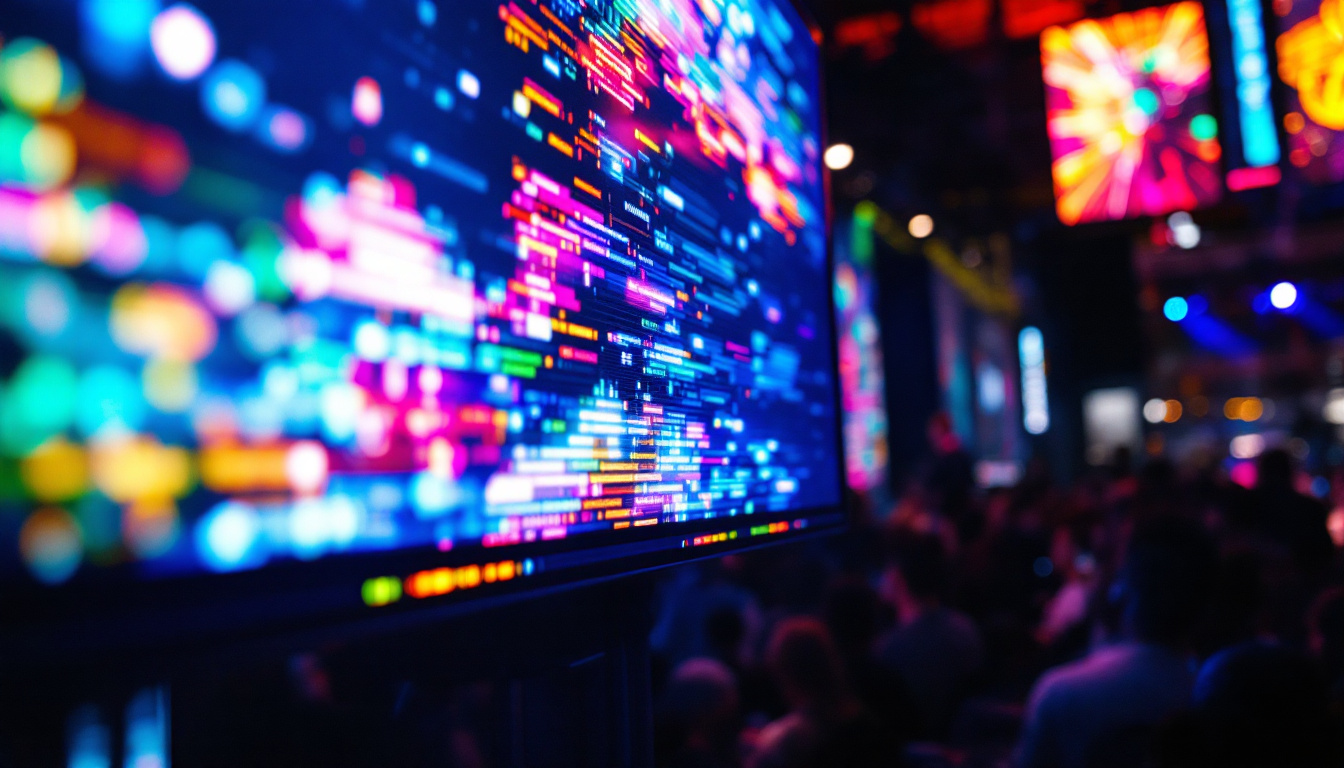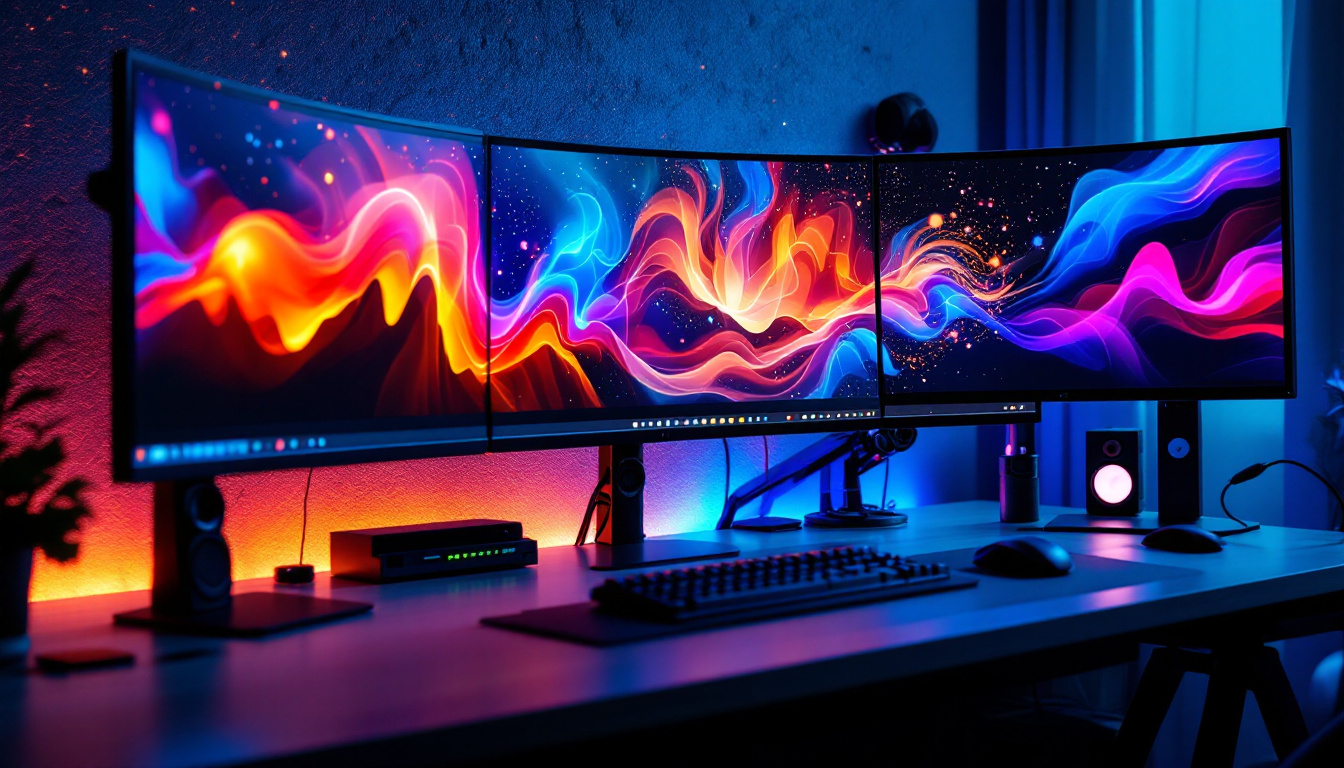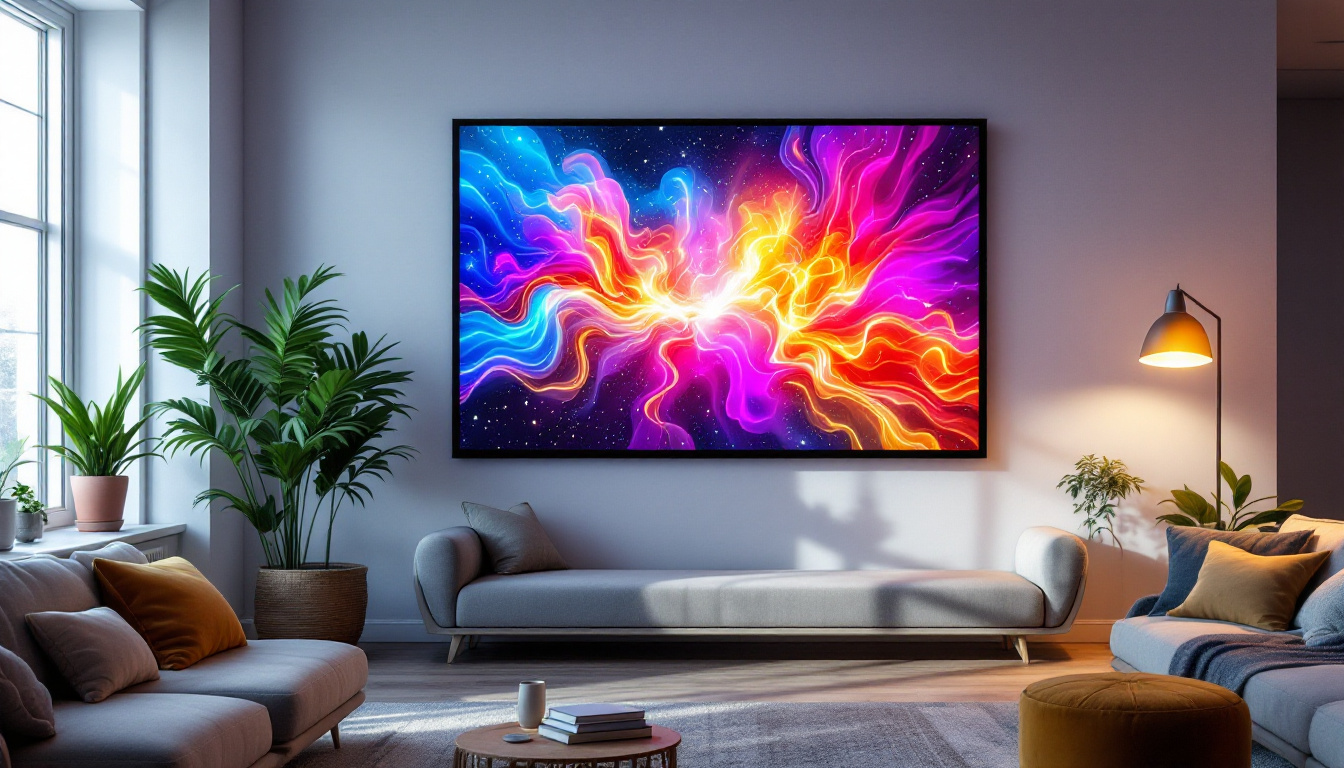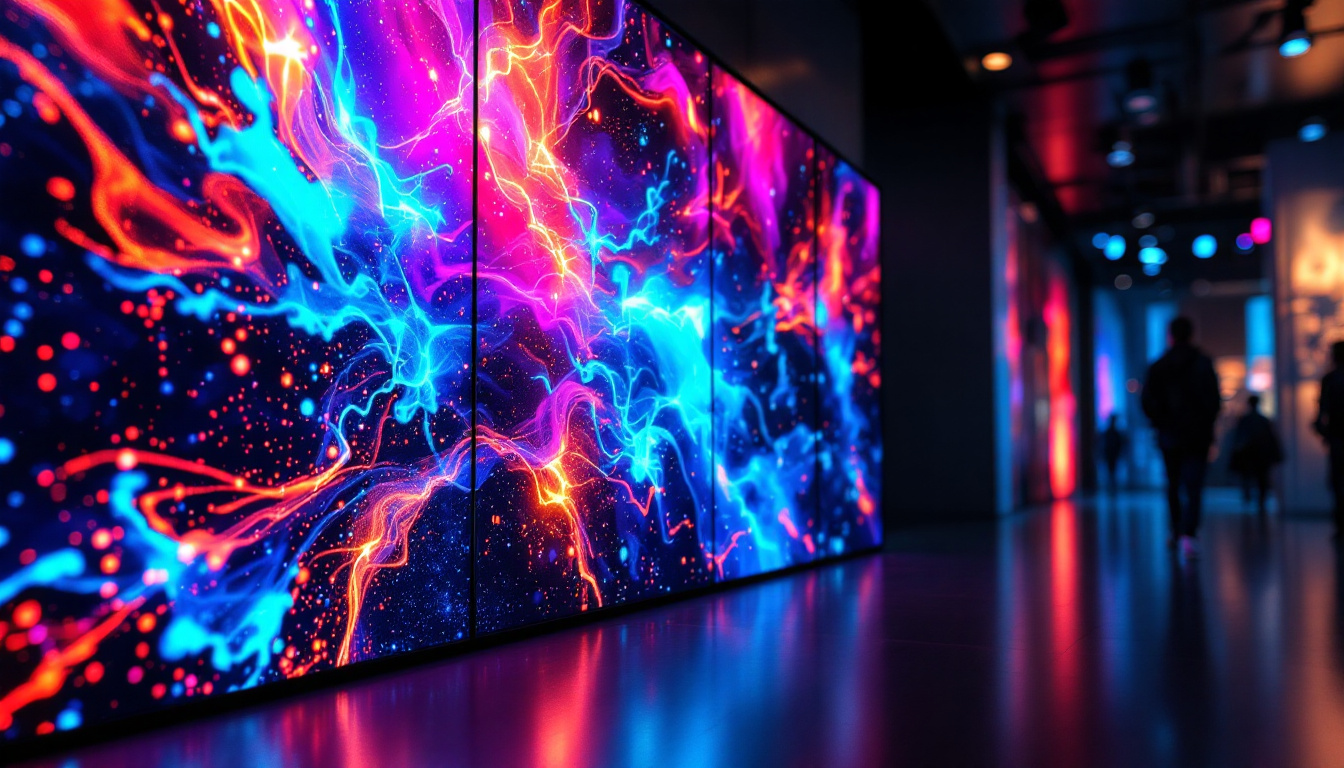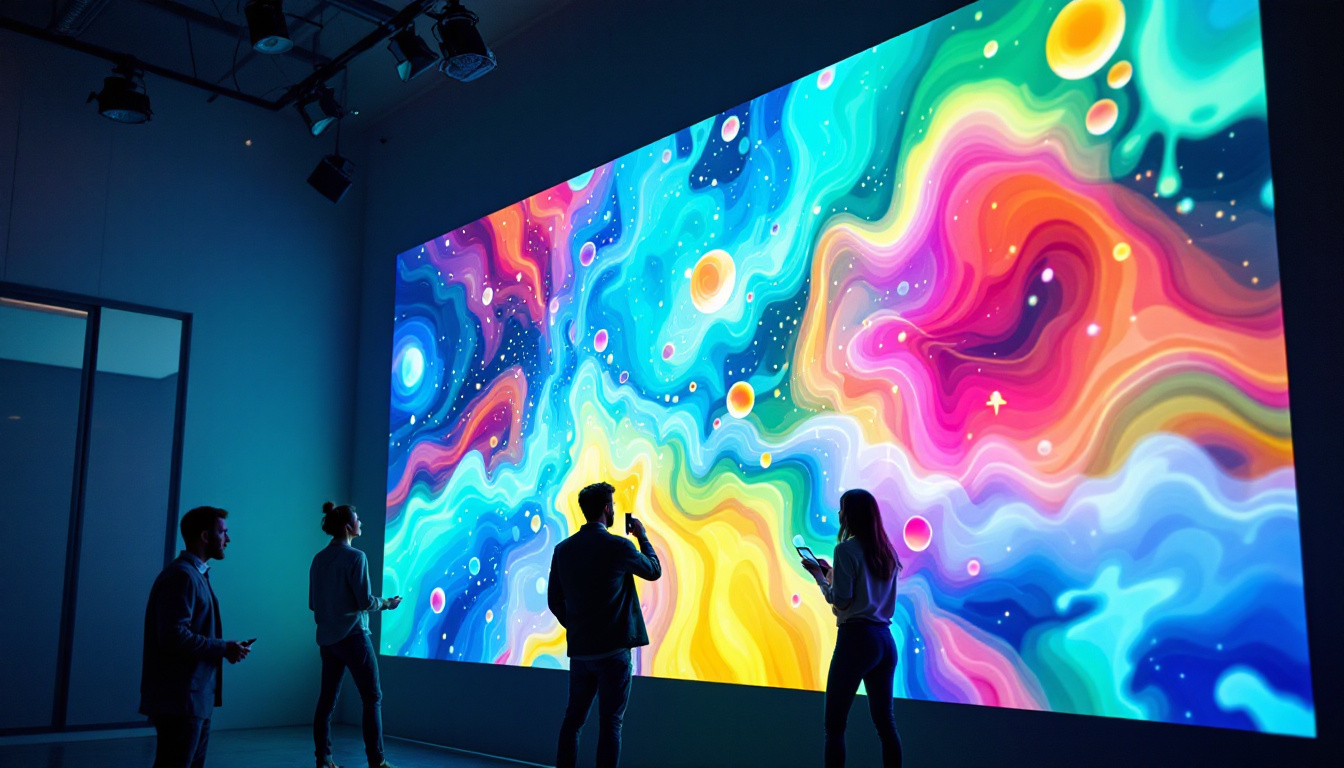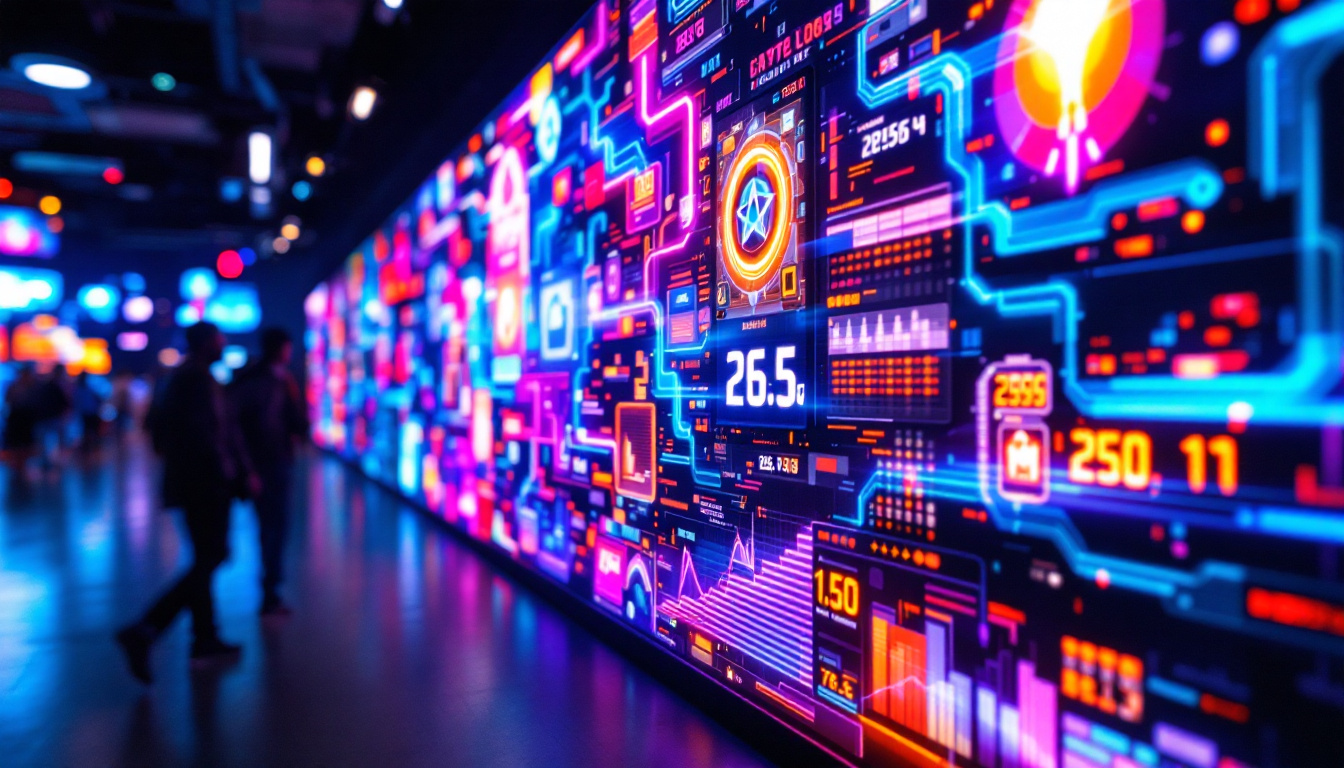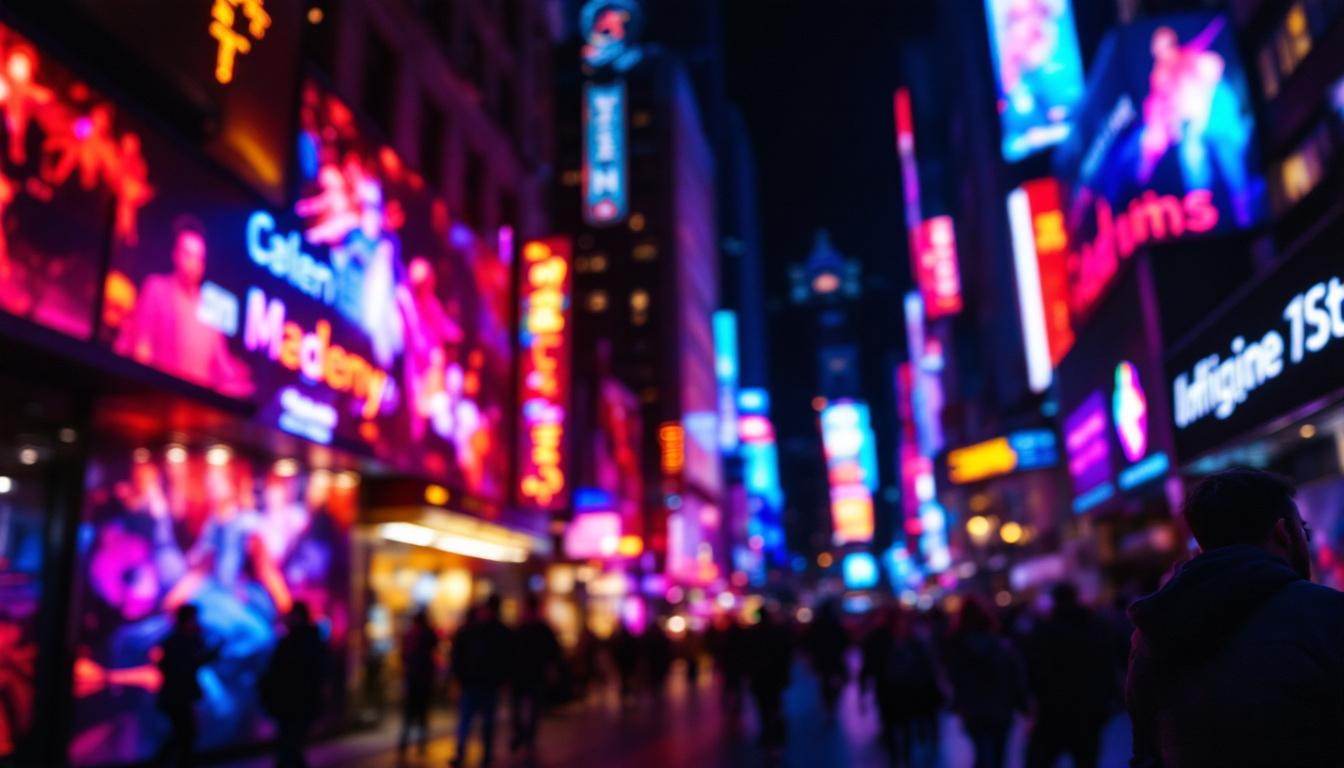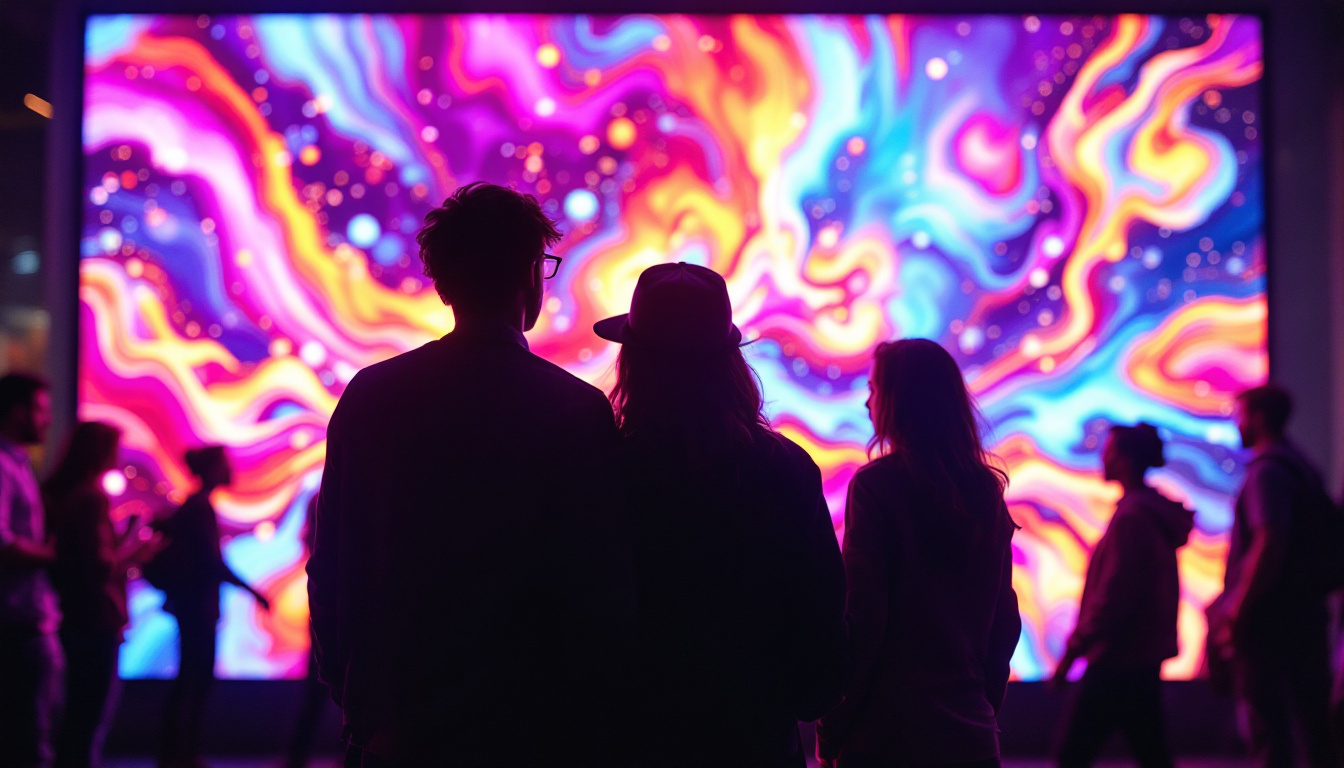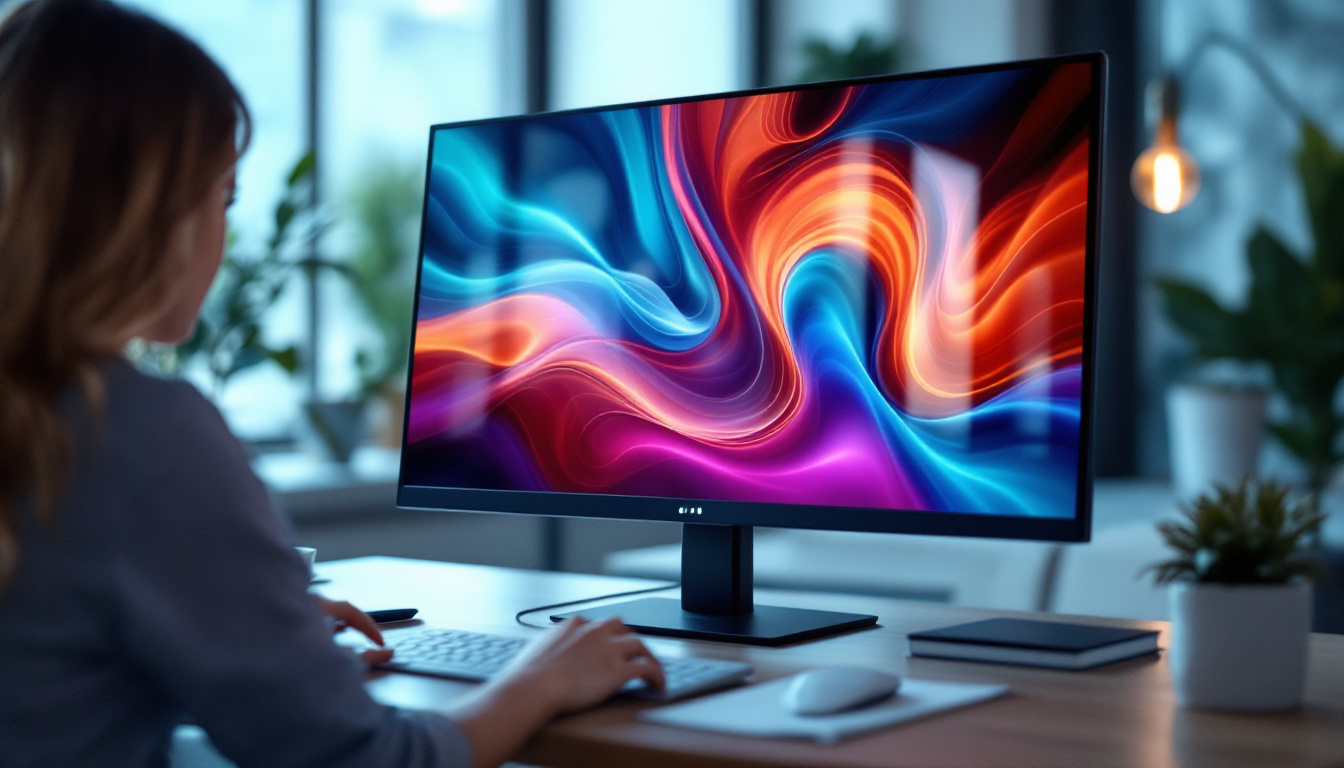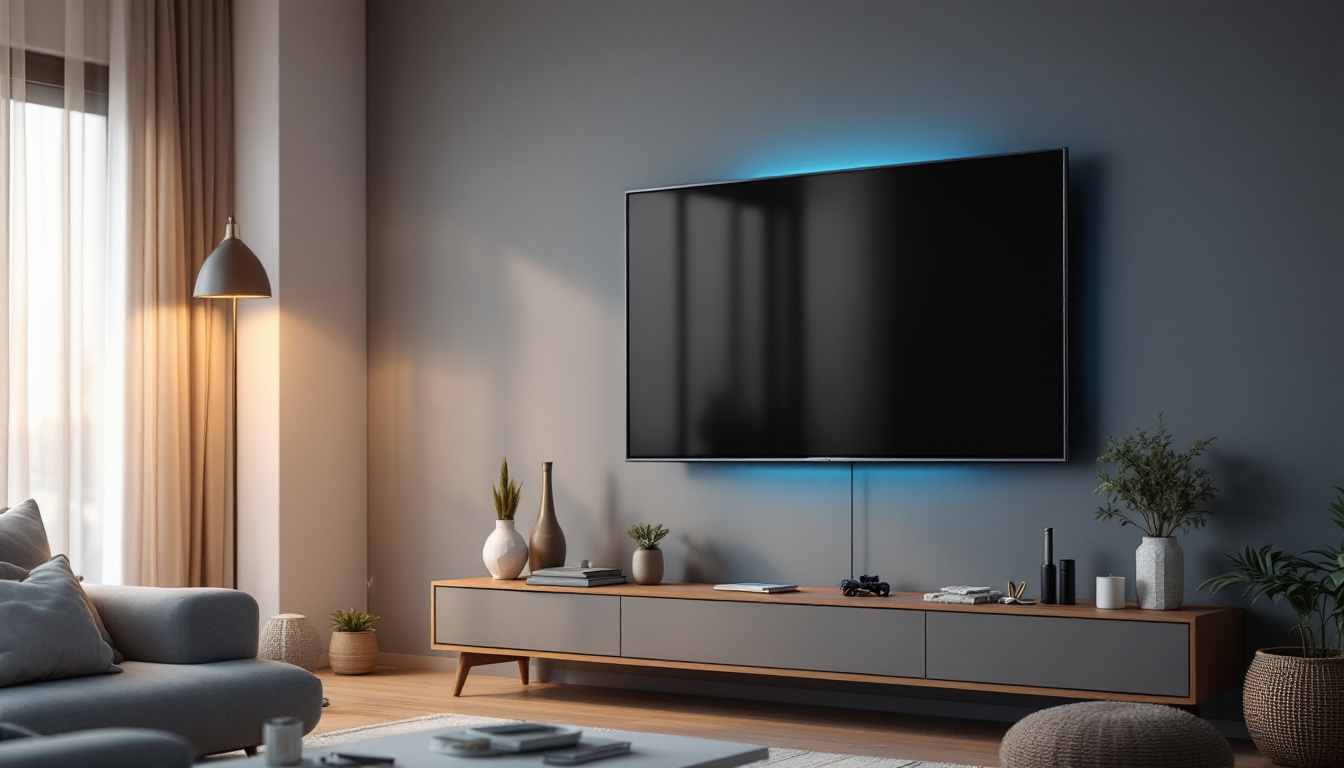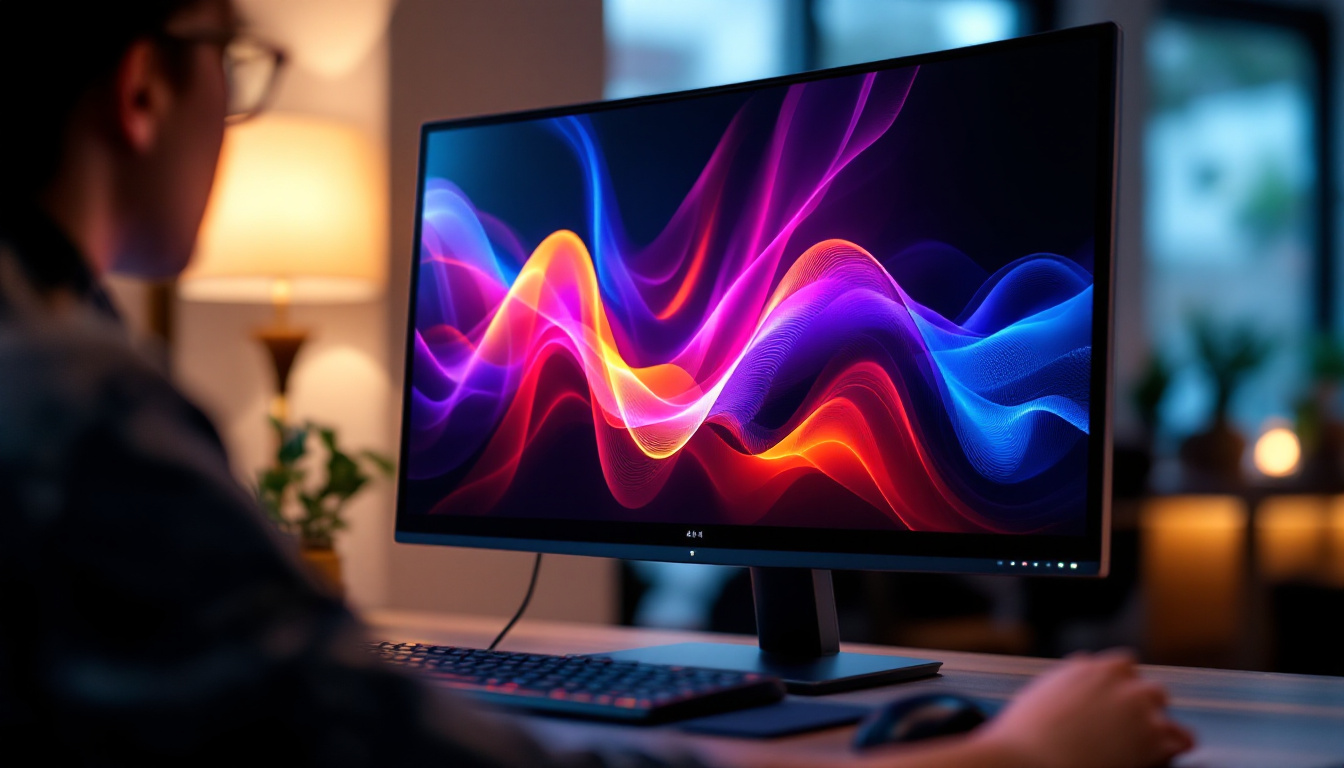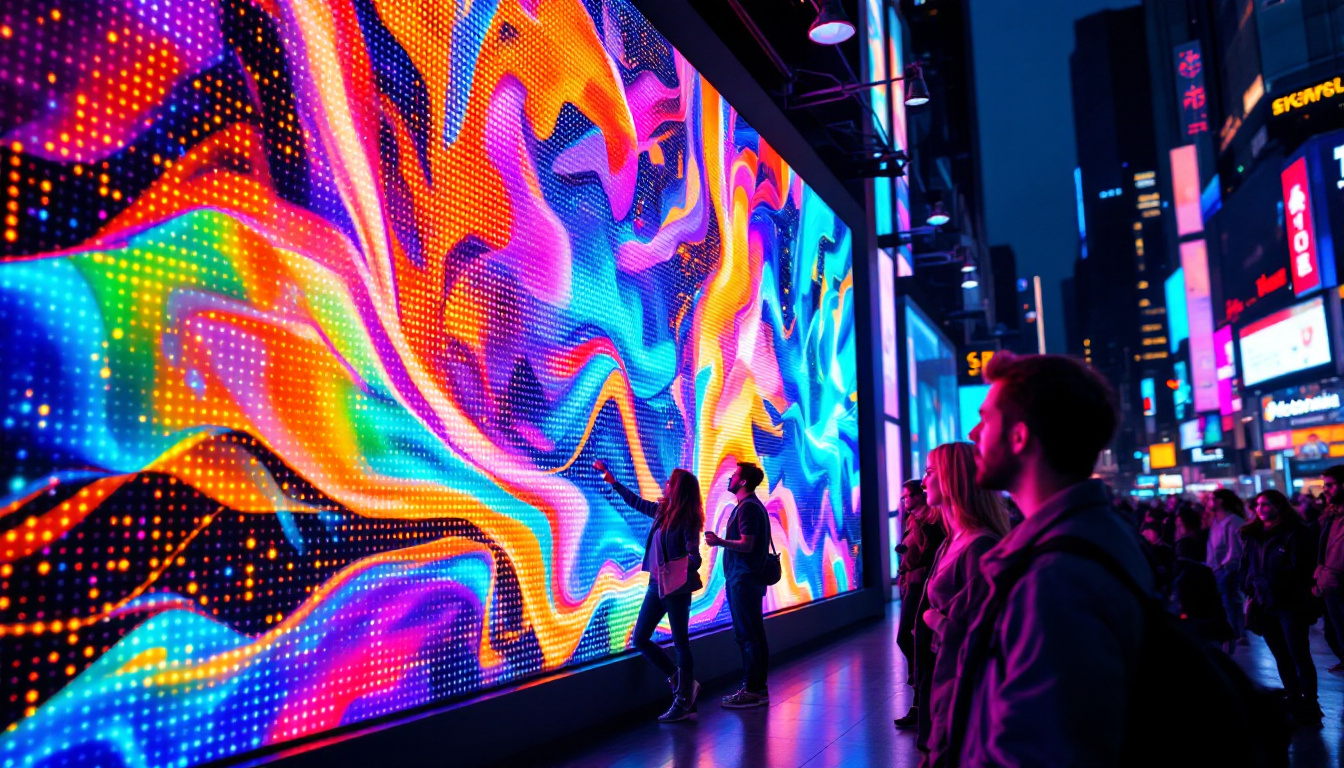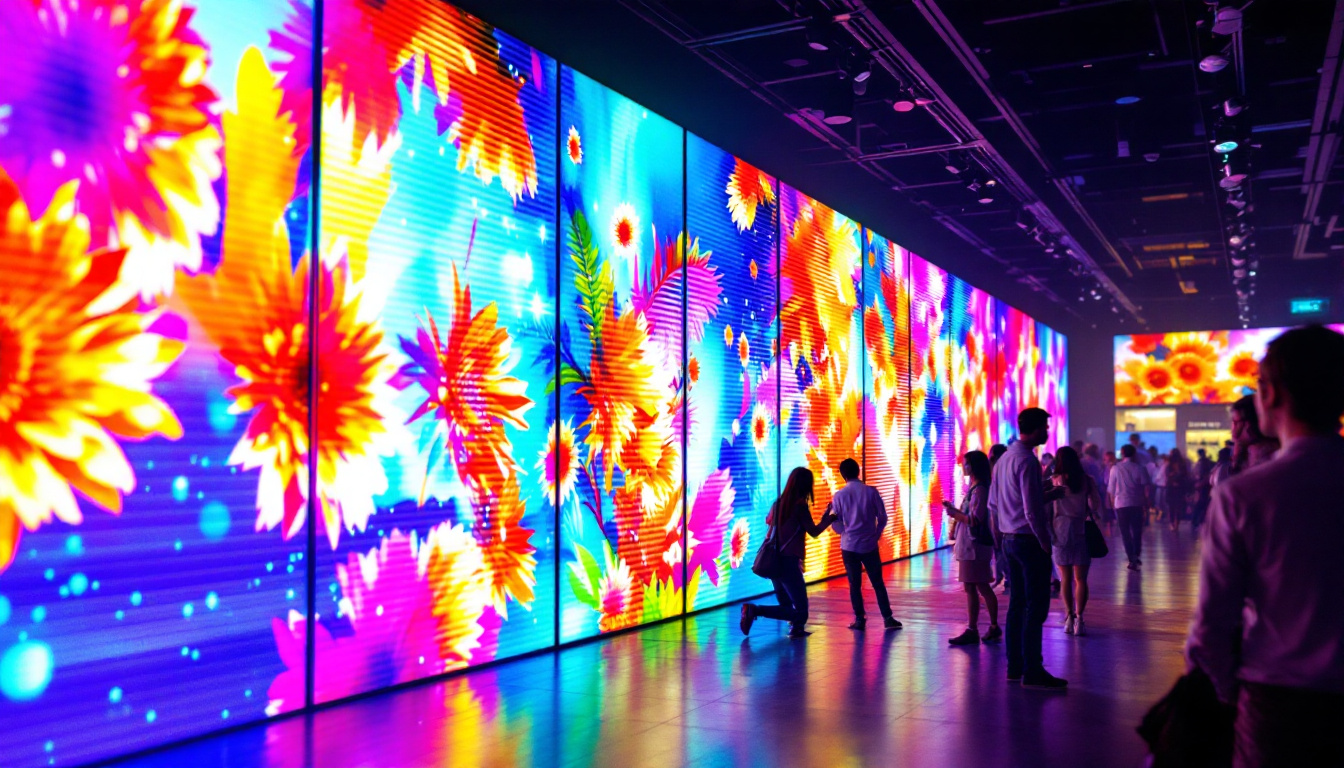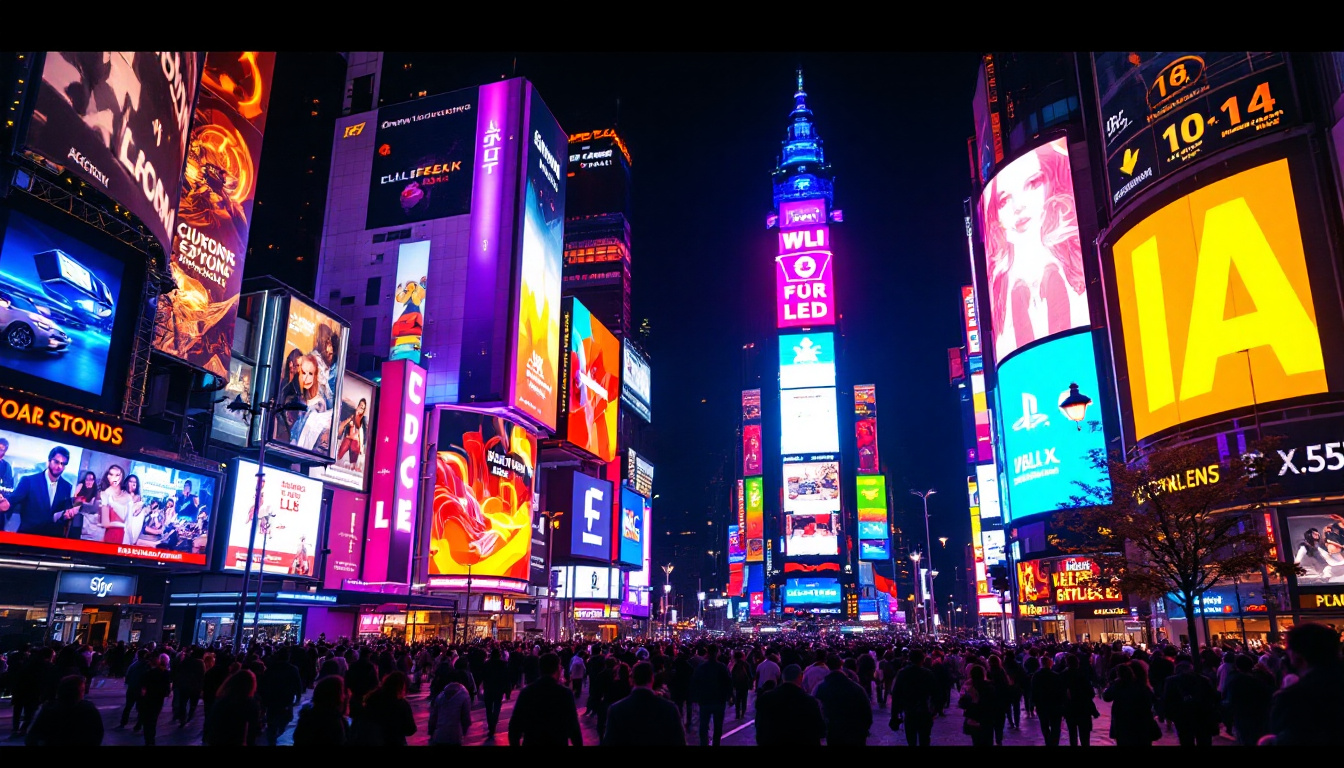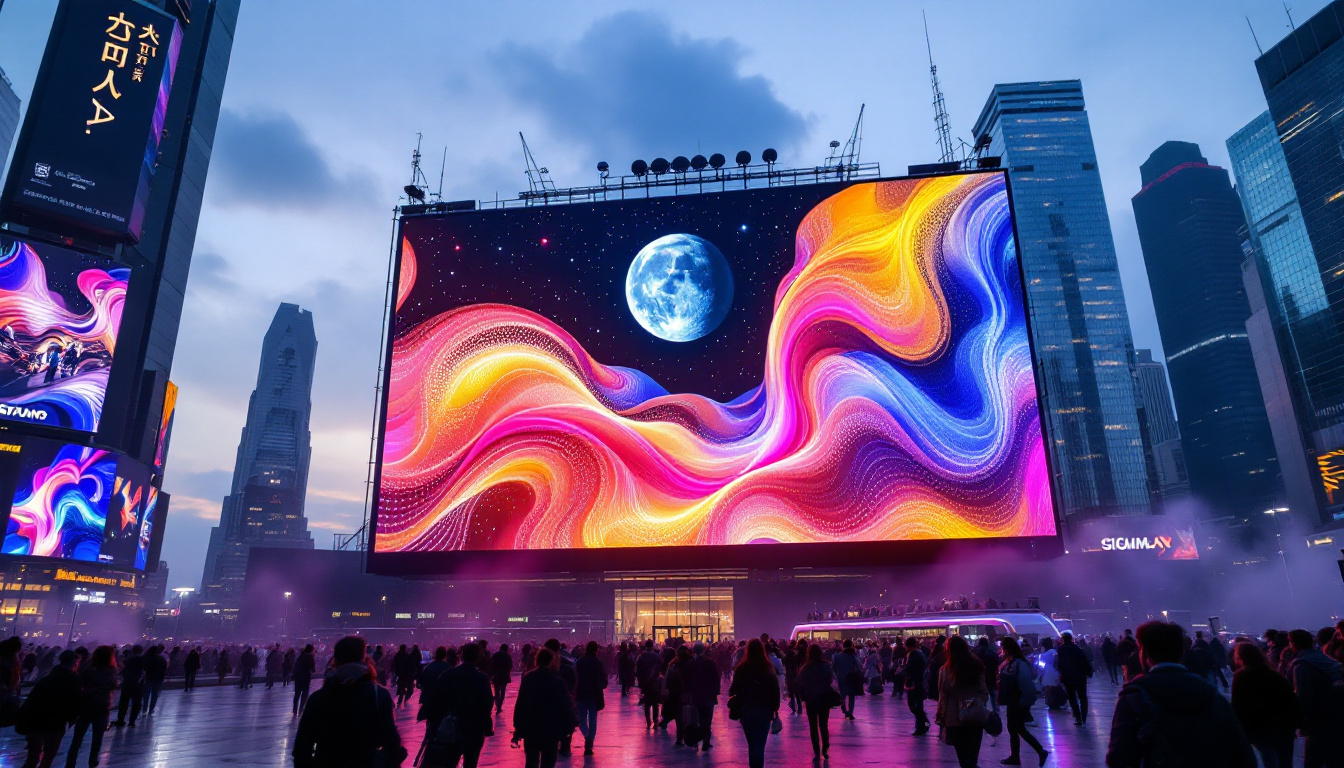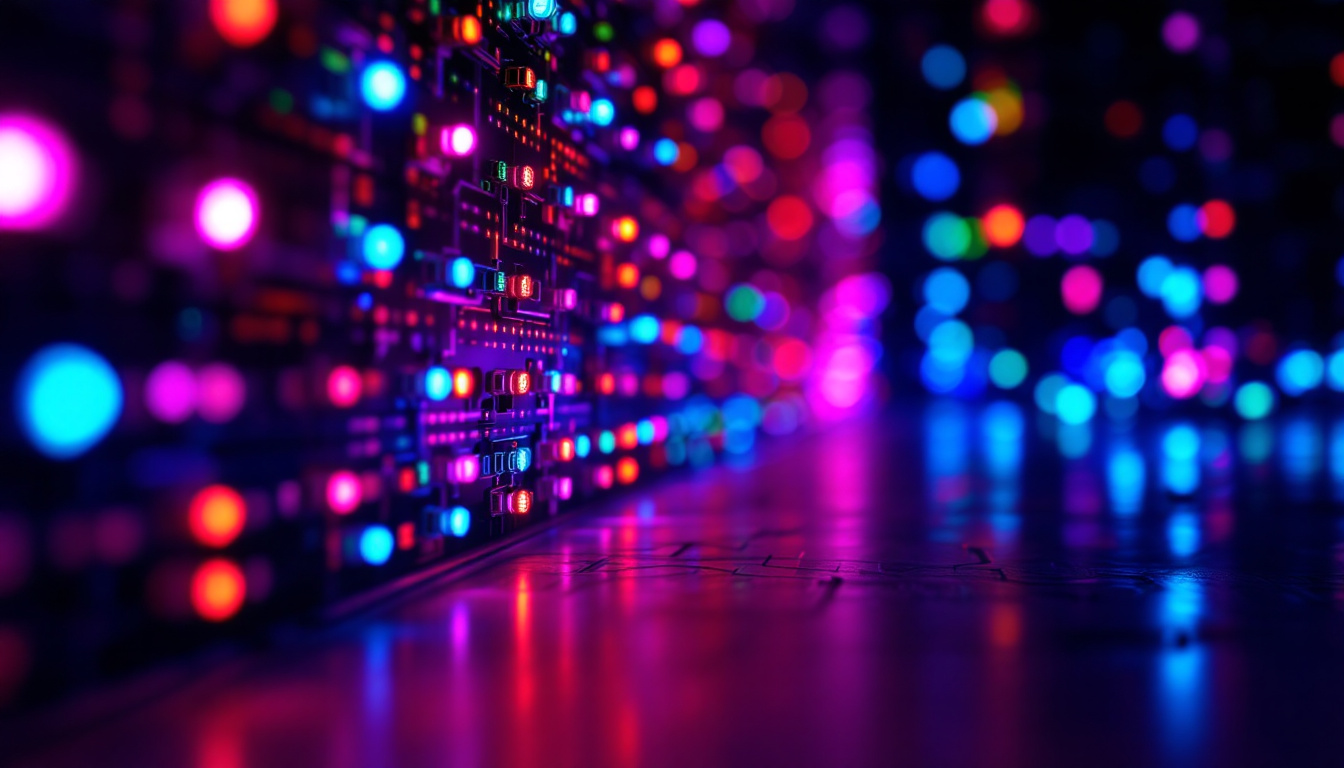In the realm of visual technology, the evolution of display systems has transformed the way information is presented and consumed. Among these advancements, LED displays have emerged as a powerful alternative to traditional projection screens. This article delves into the intricacies of LED display technology, comparing it with conventional projection screens, and exploring its benefits, applications, and future potential.
Understanding LED Display Technology
LED, or Light Emitting Diode, technology utilizes semiconductor materials to produce light when an electric current passes through them. This fundamental principle underlies the operation of LED displays, which are composed of numerous individual LED units that collectively form images and videos. The versatility and efficiency of LED technology have made it a popular choice for various applications, from large-scale outdoor billboards to intimate indoor settings. Additionally, the energy efficiency of LED displays is noteworthy; they consume significantly less power compared to traditional lighting technologies, which not only reduces operational costs but also contributes to a more sustainable environment.
How LED Displays Work
At the core of an LED display are pixels, each made up of red, green, and blue (RGB) LEDs. By adjusting the intensity of each color, a wide spectrum of colors can be produced, allowing for vibrant and dynamic visuals. The arrangement of these pixels determines the resolution of the display; higher pixel density results in sharper images and finer details. Furthermore, advancements in technology have led to the development of flexible LED displays, which can be bent and shaped to fit unconventional spaces, opening up new possibilities for creative installations and designs.
LED displays can be categorized into two main types: direct view and projection. Direct view LED displays are typically used in scenarios where the display is viewed up close, such as in televisions or computer monitors. Projection LED displays, on the other hand, project images onto a surface, similar to traditional projectors but with enhanced brightness and color accuracy. The integration of smart technology into LED displays has also transformed user interaction, allowing for touch-sensitive screens and connectivity with various devices, enhancing the overall user experience.
Advantages of LED Displays
LED displays offer several advantages over traditional projection screens. One of the most significant benefits is their brightness. LED technology can produce images that are significantly brighter than those generated by conventional projectors, making them ideal for environments with high ambient light. This characteristic ensures that the visuals remain clear and vivid, regardless of the surrounding lighting conditions. In addition, LED displays have a faster refresh rate, which is particularly beneficial for displaying fast-moving content, such as sports events or video games, without motion blur.
Another advantage is the durability of LED displays. Unlike traditional projectors, which may require frequent bulb replacements, LED units have a longer lifespan and lower maintenance costs. This longevity makes them a cost-effective solution for businesses and organizations that rely on visual displays for presentations, advertising, or entertainment. Moreover, the rugged construction of many LED displays allows them to withstand outdoor conditions, making them suitable for use in public spaces, concerts, and sporting events, where they can deliver impressive visuals even in challenging environments. The ability to customize LED displays in terms of size, shape, and configuration further enhances their appeal, allowing for tailored solutions that meet specific project requirements.
Comparing LED Displays to Traditional Projection Screens
While LED displays offer numerous advantages, it is essential to understand how they stack up against traditional projection screens. Both technologies have their strengths and weaknesses, and the choice between them often depends on specific use cases and requirements.
Image Quality and Resolution
When it comes to image quality, LED displays generally outperform traditional projection screens. The ability to produce high contrast ratios and vibrant colors gives LED displays an edge in delivering stunning visuals. Furthermore, the resolution of LED displays can be tailored to meet the needs of various applications, from high-definition television viewing to immersive gaming experiences.
In contrast, traditional projectors may struggle with color accuracy and brightness, especially in well-lit environments. The quality of the projection can also be affected by the surface onto which the image is projected, leading to inconsistencies in the viewing experience. Additionally, LED displays maintain their color integrity and brightness over time, whereas projectors may require frequent bulb replacements, which can add to the overall cost and maintenance efforts.
Portability and Installation
Portability is another factor to consider when comparing these two technologies. Traditional projectors are often more portable than LED displays, making them suitable for temporary setups or mobile presentations. However, advancements in LED technology have led to the development of lightweight and modular LED panels that can be easily transported and assembled, narrowing the gap in portability.
Installation complexity also varies between the two. Traditional projectors typically require a dedicated space with specific mounting requirements, while LED displays can be configured in various formats, including curved and flexible designs. This versatility allows for creative installations that can adapt to different environments. Moreover, LED displays can be integrated into architectural elements, such as walls or ceilings, offering a seamless look that enhances the overall aesthetic of a space. This integration capability is particularly appealing in modern venues, where design and functionality must coexist harmoniously.
Furthermore, the setup time for LED displays can be significantly reduced, as many models come with plug-and-play features that allow for quick deployment. This is a crucial advantage in fast-paced environments, such as live events or conferences, where time is of the essence. The ease of installation and the ability to create large, eye-catching displays without the need for extensive rigging or calibration make LED technology a favorite among event organizers and venue operators alike.
Applications of LED Displays
The versatility of LED displays has led to their widespread adoption across various industries. From entertainment to corporate environments, the applications are diverse and continually expanding.
Entertainment and Events
In the entertainment industry, LED displays have revolutionized the way events are staged. Concerts, festivals, and corporate events now utilize large LED screens to create immersive experiences for audiences. These displays can convey dynamic visuals, including live feeds, animations, and graphics, enhancing the overall atmosphere of the event.
Moreover, the flexibility of LED technology allows for creative setups, such as curved screens and interactive displays, which can engage audiences in unique ways. This adaptability has made LED displays a staple in modern event production. For instance, during major sporting events, LED displays are often used not just for scoreboards but also for instant replays and fan engagement activities, creating a more interactive experience. The ability to customize the content in real-time means that event organizers can respond to audience reactions and preferences, making each event feel more personalized and engaging.
Corporate and Educational Use
In corporate settings, LED displays are increasingly used for presentations, video conferencing, and digital signage. Their ability to deliver clear and impactful visuals makes them an effective tool for communication and marketing. Companies can showcase their products, share information, and create engaging environments that enhance collaboration and productivity.
Educational institutions are also embracing LED technology. Classrooms equipped with LED displays can facilitate interactive learning experiences, allowing educators to present information in dynamic ways. This technology can cater to various learning styles, making education more engaging and effective. Furthermore, LED displays can be integrated with educational software and tools, enabling real-time quizzes and interactive lessons that encourage student participation. The use of LED technology in schools not only enhances the learning environment but also prepares students for a tech-driven future, equipping them with the skills necessary to thrive in a digital world.
The Future of LED Display Technology
The future of LED display technology looks promising, with ongoing advancements that continue to enhance performance and expand applications. As technology evolves, several trends are emerging that will shape the landscape of LED displays.
Advancements in Resolution and Clarity
One of the most significant trends is the push for higher resolutions. As consumer demand for ultra-high-definition content grows, manufacturers are developing LED displays with increasingly higher pixel densities. This trend is evident in the rise of 8K displays, which promise unparalleled clarity and detail.
Additionally, advancements in microLED technology are paving the way for even smaller and more efficient LED units. These microLED displays can achieve higher brightness levels and better color accuracy, further enhancing the viewing experience.
Integration with Smart Technology
Another trend is the integration of LED displays with smart technology. As the Internet of Things (IoT) continues to expand, LED displays are becoming more connected and interactive. This integration allows for features such as real-time data display, remote management, and personalized content delivery.
Smart LED displays can adapt to their environment, adjusting brightness based on ambient light conditions and providing users with a seamless experience. This capability will likely become a standard feature in future display systems.
Conclusion
LED displays represent a significant leap forward in visual technology, offering numerous advantages over traditional projection screens. Their ability to deliver bright, vibrant images in various environments makes them a versatile choice for a wide range of applications. As advancements continue to shape the future of this technology, the potential for LED displays is vast, promising exciting developments in how information is presented and experienced.
Whether used in entertainment, corporate settings, or educational environments, LED displays are set to play a pivotal role in the evolution of visual communication. As users increasingly seek high-quality, engaging content, LED technology will undoubtedly continue to rise in prominence, reshaping the landscape of display systems for years to come.
Discover LumenMatrix’s Innovative LED Solutions
Ready to elevate your visual presentations with the latest in LED technology? LumenMatrix is at the forefront of this evolution, offering a comprehensive range of LED display solutions tailored to your needs. From Indoor and Outdoor LED Wall Displays to specialized options like Vehicle LED Displays, LED Sports Displays, and even Custom LED configurations, our products are designed to captivate and engage. Experience the future of visual communication with LumenMatrix and transform your space into a dynamic visual experience. Check out LumenMatrix LED Display Solutions today and see the difference for yourself.

